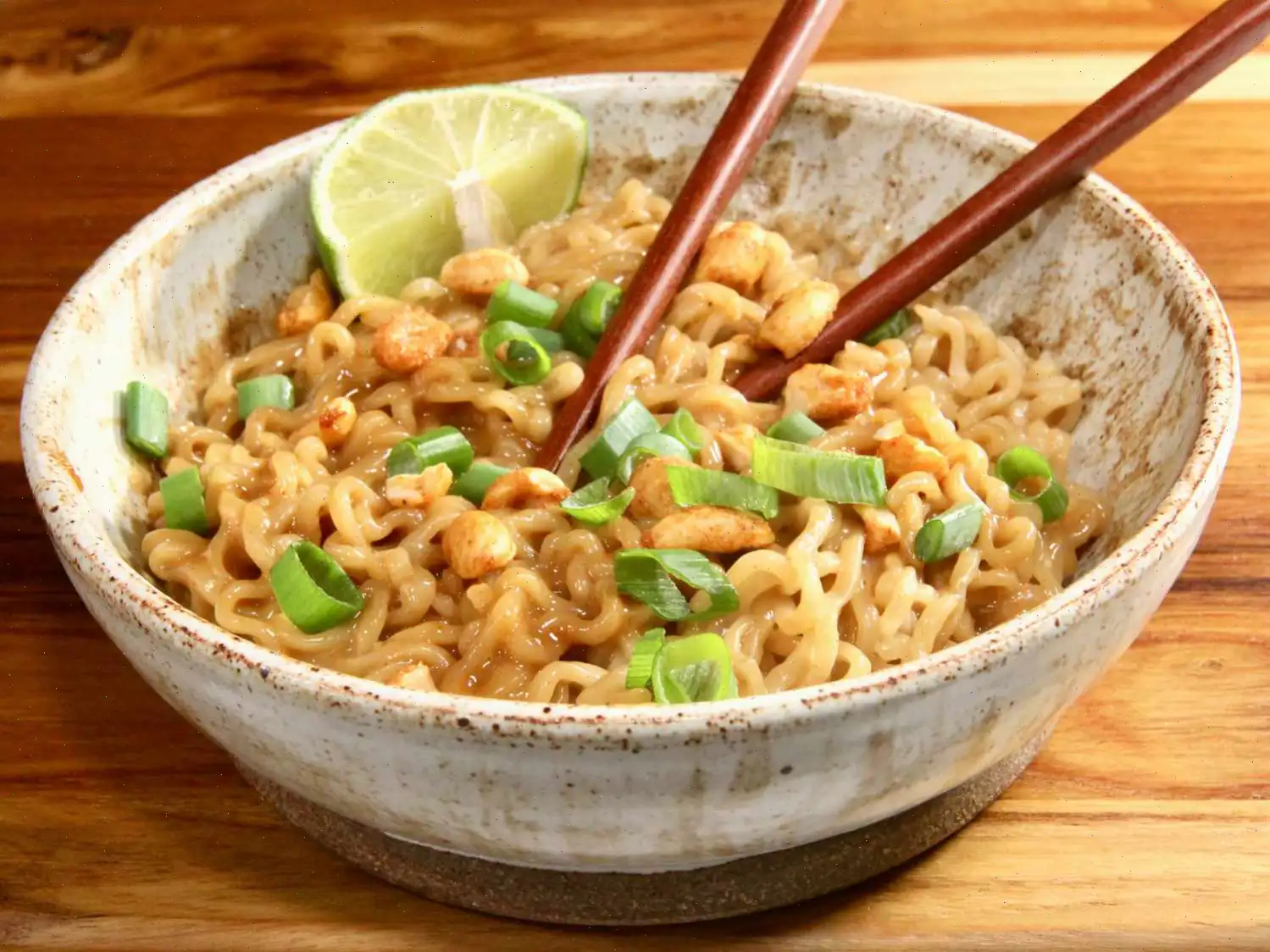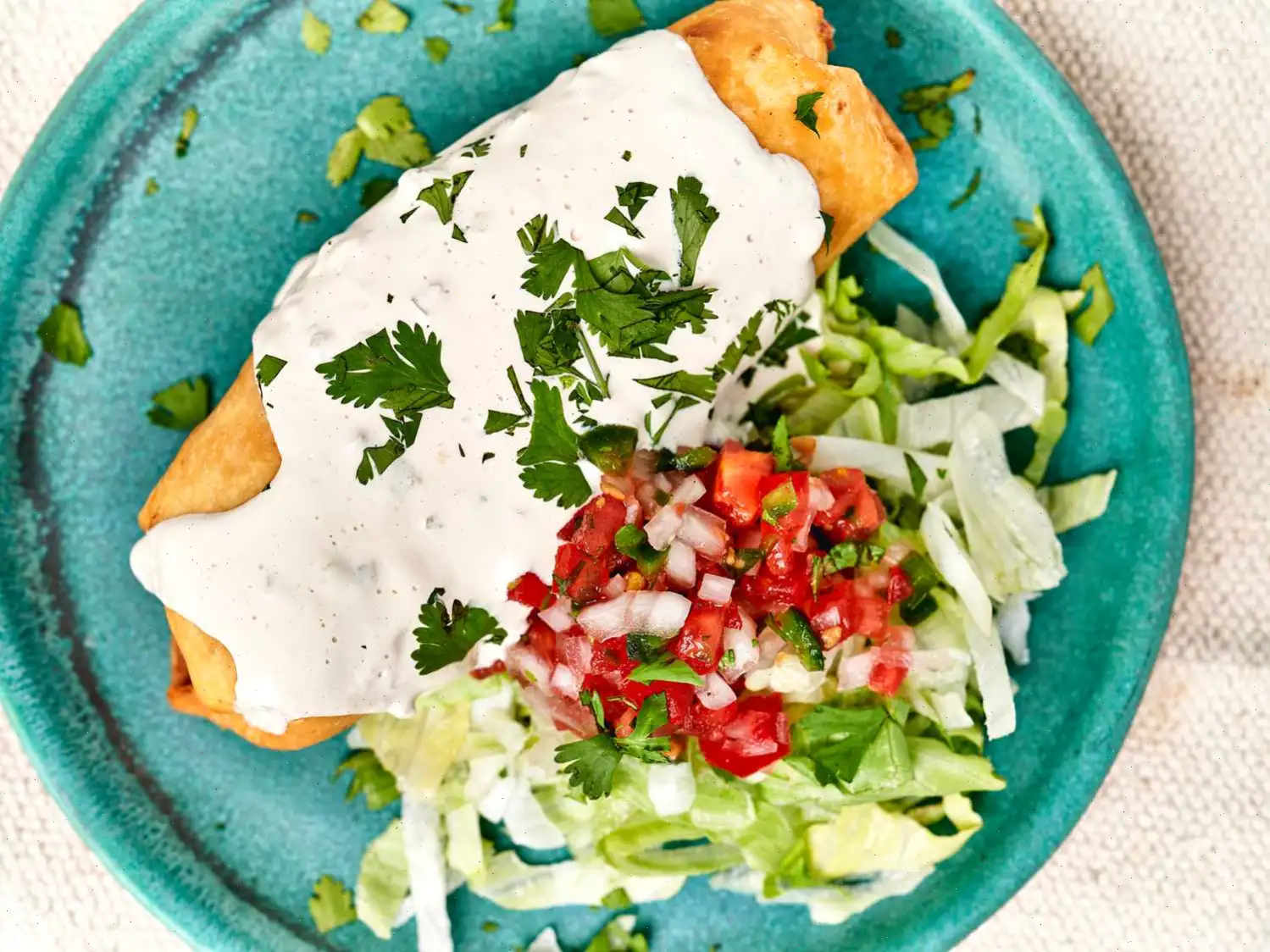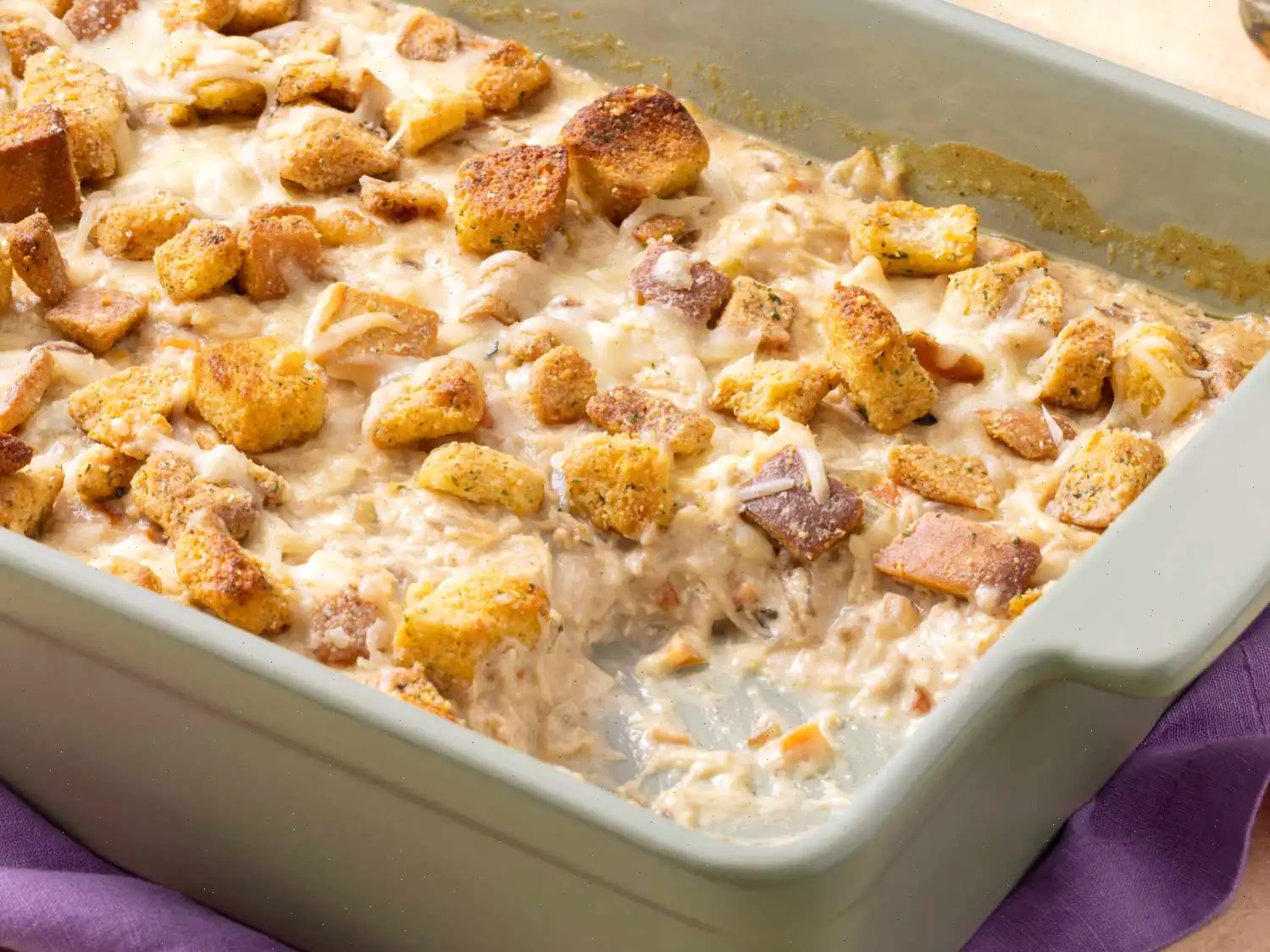
Thai Peanut Butter Ramen Recipe
Ingredients
This recipe is designed for 3 servings. Ingredient amounts are adjusted automatically for scaling, but cooking steps remain the same. Not all recipes scale perfectly.
- 2 (3-ounce) packs instant ramen noodles, seasoning packets discarded
- 1/4 cup creamy peanut butter
- 3 tablespoons reduced-sodium soy sauce
- 1 1/2 tablespoons honey
- 1 tablespoon Sriracha, adjust to taste
- 2 teaspoons sesame oil
- 2 green onions, thinly sliced
- 2 tablespoons chopped peanuts
- 3 fresh lime wedges
Directions
- Fill a large pot with water and bring it to a rolling boil over high heat.
- Add the ramen noodles and cook until tender, about 3 to 5 minutes.
- While the noodles cook, combine peanut butter, soy sauce, honey, Sriracha, and sesame oil in a large bowl. Whisk until smooth and creamy.
- Reserve 1/2 cup of pasta water, then drain the noodles thoroughly.
- Immediately transfer the noodles into the peanut butter sauce. Toss until every strand is coated. If you prefer a thinner sauce, gradually add the reserved pasta water, one tablespoon at a time, until desired consistency is reached.
- Serve the noodles in bowls and garnish with sliced green onions, chopped peanuts, and lime wedges for squeezing over each portion.
- Enjoy immediately while warm.
Nutrition Facts (per serving)
- Calories: 503
- Total Fat: 27g (34%)
- Saturated Fat: 7g (37%)
- Cholesterol: 0mg (0%)
- Sodium: 1881mg (82%)
- Total Carbohydrates: 57g (21%)
- Dietary Fiber: 6g (22%)
- Total Sugars: 11g
- Protein: 15g (30%)
- Vitamin C: 23mg (26%)
- Calcium: 62mg (5%)
- Iron: 3mg (16%)
- Potassium: 388mg (8%)
*Percent Daily Values are based on a 2,000 calorie diet. Individual values may vary depending on your calorie needs. Nutrient information may not be available for all ingredients. If following a medically restrictive diet, consult your doctor or registered dietitian before preparing.
The History and Origins of Thai Peanut Butter Ramen
Thai Peanut Butter Ramen is a modern fusion dish that blends traditional Asian flavors with the global popularity of instant ramen noodles. While ramen originated in Japan in the early 20th century as a convenient and affordable meal, its adaptability has allowed chefs and home cooks around the world to experiment with bold flavors. The addition of Thai-inspired ingredients, particularly peanut butter, soy sauce, and Sriracha, reflects the global influence of Thai cuisine, which is renowned for balancing sweet, salty, sour, and spicy tastes.
Regional Characteristics
This dish exhibits distinct regional influences from Thailand and Japan. The creamy peanut sauce is a hallmark of Thai cooking, often found in dishes like satay and Thai noodle salads. Ramen, on the other hand, provides the comforting, chewy noodle base from Japanese cuisine. The combination of these elements creates a dish that is both familiar and innovative, highlighting Thailands love for bold, spicy flavors while embracing the convenience and texture of Japanese ramen noodles.
Differences from Similar Dishes
While there are numerous peanut noodle recipes across Southeast Asia, Thai Peanut Butter Ramen differs in its use of instant ramen noodles rather than traditional rice noodles or egg noodles. This substitution significantly reduces cooking time while keeping the dish accessible to a global audience. Additionally, the inclusion of lime wedges and roasted peanuts as garnishes introduces fresh, crunchy, and tangy elements that are less common in standard peanut noodle dishes, giving it a distinctive flavor profile.
Typical Serving Contexts
Thai Peanut Butter Ramen is versatile in its presentation. It is often served as a quick weeknight dinner at home, but it also appears in casual cafes and modern Asian fusion restaurants. Its vibrant presentation, with lime wedges and chopped peanuts, makes it suitable for lunch menus, takeout, and even small gatherings where a flavorful, customizable dish is desired. Street food vendors in some urban areas have even adapted this recipe, creating fast, affordable versions for on-the-go diners.
Interesting Facts
- The dish exemplifies the global trend of fusion cuisine, blending Japanese convenience with Thai flavor complexity.
- Peanut butter, a Western ingredient, has been embraced in Southeast Asian cooking to add richness and creaminess to sauces.
- Lime wedges are not just for decorationthey provide essential acidity that balances the richness of the peanut sauce.
- The recipe is highly customizable: protein such as chicken, tofu, or shrimp can be added without altering the core flavor dramatically.
- Instant ramens worldwide popularity has made this Thai-inspired version a favorite among students and busy professionals seeking a quick, gourmet-tasting meal.
Overall, Thai Peanut Butter Ramen represents a delicious fusion of convenience, creativity, and authentic flavor, demonstrating how traditional ingredients from different regions can come together to form a modern culinary favorite.








